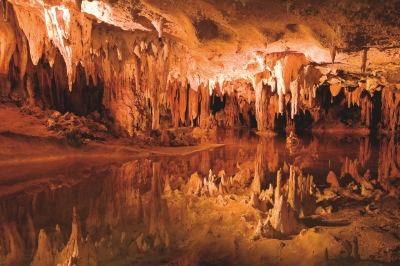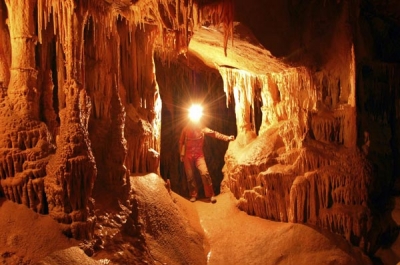
| No, stalactites and stalagmites can occur singly. However, it is true that stalagmites are usually formed on the ground from the same drip source that creates a stalactite on the ceiling of the cave. The simplest stalactite takes the form of a thin straw. As more and more of the mineral calcite is deposited, the downward growth takes the form of a cone. The calcite drip that reaches the ground forms a stalagmite, a bit like a spike with a rounded tip. It is possible that, over time, the stalagmite and stalactite may meet to form a column that extends from floor to ceiling. |
Stalagmites have thicker proportions and grow up on the bottom of a cavern from the same drip-water source, the mineral from which is deposited after the water droplet falls across the open space in the rock. Not every stalactite has a complementary stalagmite, and many of the latter may have no stalactite above them. Where the paired relation exists, however, continual elongation of one or both may eventually result in a junction and the formation of a column.
Credit: Britannica
Picture Credit : Google





